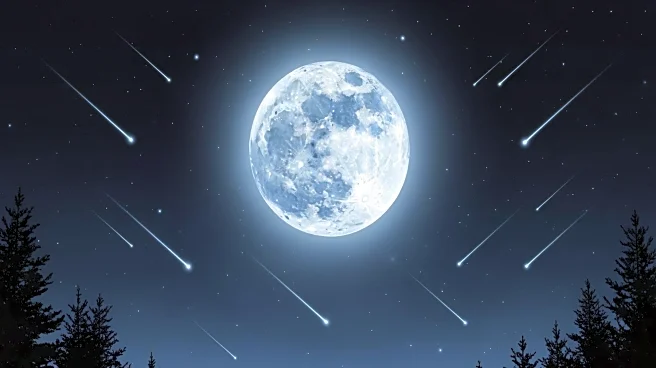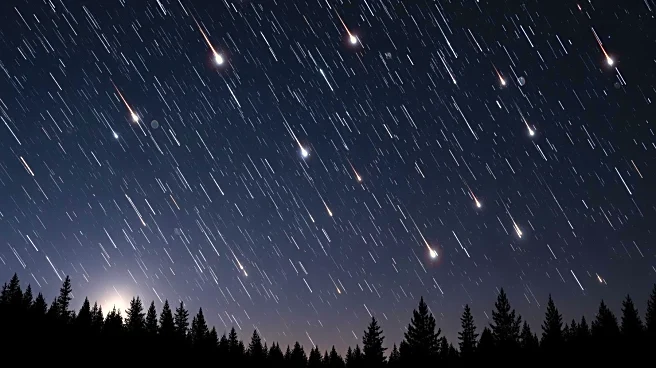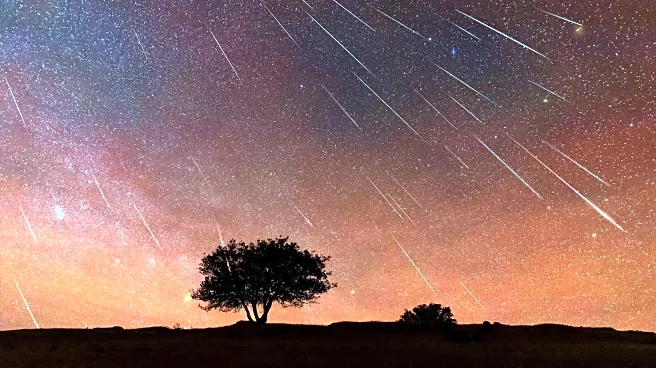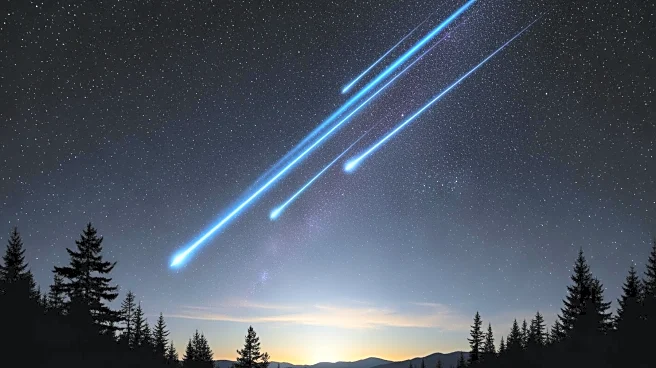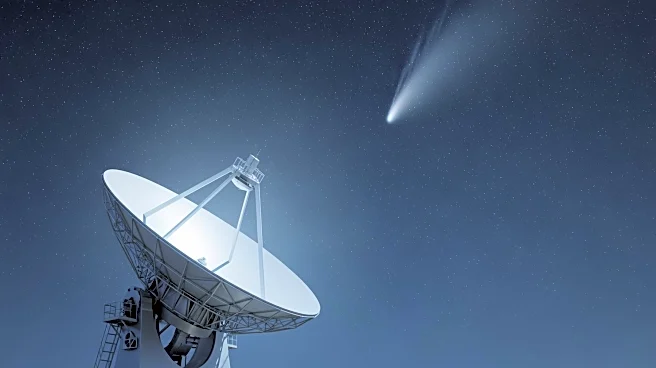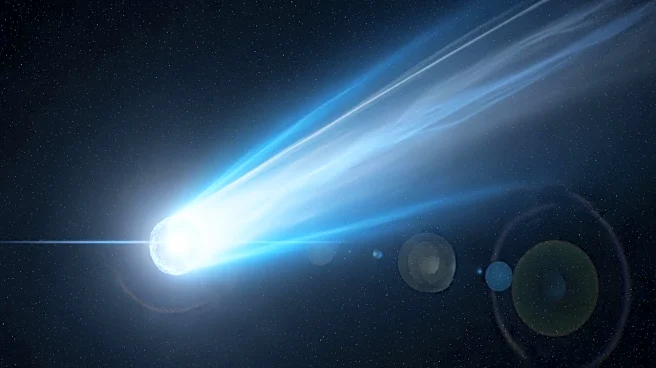What's Happening?
The next full moon, known as the 'cold moon' or 'long night moon,' is set to occur on December 4, 2025. This full moon will coincide with the Geminid meteor shower, which peaks on December 13-14. The Geminid meteor shower is renowned
for its bright and colorful meteors, visible from the Northern Hemisphere. The waxing crescent moon phase is currently visible, leading up to the full moon. The Geminid meteor shower is expected to be the most active meteor shower of the year, with up to 120 meteors visible per hour under ideal conditions. The December full moon will be a supermoon, appearing larger and brighter due to its proximity to Earth.
Why It's Important?
The December full moon and Geminid meteor shower offer a unique opportunity for stargazers and astronomy enthusiasts to witness two significant celestial events. The supermoon will provide a brighter and larger view, enhancing the visibility of the Geminid meteors. This event highlights the natural beauty and wonder of the night sky, encouraging public interest in astronomy and science. The Geminid meteor shower, originating from the asteroid 3200 Phaethon, is a rare occurrence, as most meteor showers are comet-based. This distinction adds scientific interest and value to the observation of the Geminids.
What's Next?
Following the December full moon and Geminid meteor shower, the winter solstice will occur on December 21, marking the shortest day of the year. The next full moon, the January wolf supermoon, is scheduled for January 3, 2026. Stargazers can continue to enjoy the night sky as the Geminid meteor shower remains active until December 17. The Northern Taurid meteor shower will also be visible until December 10, providing additional opportunities for meteor observation.
Beyond the Headlines
The occurrence of a supermoon during the Geminid meteor shower may impact the visibility of the meteors due to increased brightness in the sky. However, the supermoon itself is a spectacle, drawing attention to the dynamics of celestial bodies and their interactions. The Geminid meteor shower's origin from an asteroid rather than a comet challenges traditional understanding and offers insights into the composition and behavior of asteroids. This event underscores the importance of continued observation and study of celestial phenomena.
